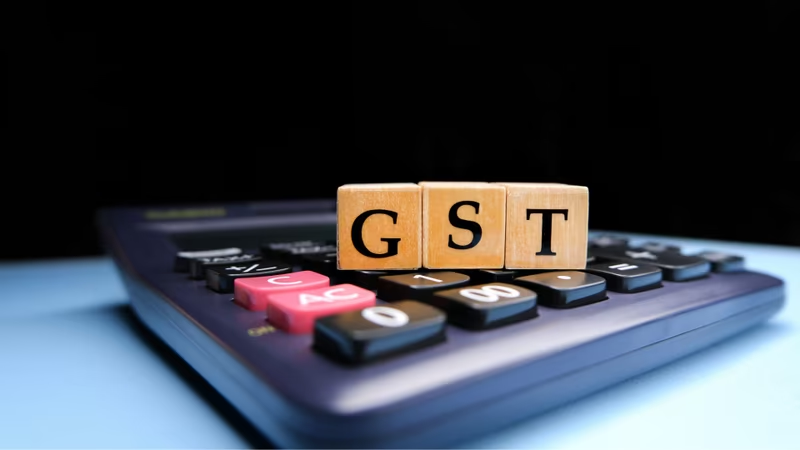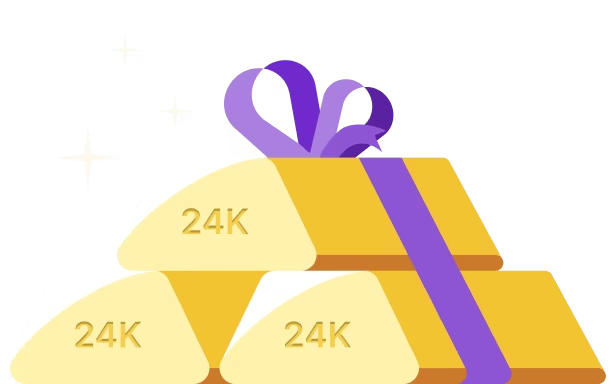The Goods and Services Tax (GST) framework introduced a significant shift in how India handles indirect taxation.
While the default ‘forward charge’ system is widely understood, there is another crucial concept that every registered business must know about. The Reverse Charge Mechanism under GST shifts the tax liability from the supplier by placing the responsibility squarely on the recipient of goods or services.
This comprehensive guide aims to demystify the Reverse Charge Mechanism under GST for 2025. We will discuss its nuances and provide a clear roadmap to ensure your business remains fully compliant.
What is Reverse Charge on GST?
Generally, in the case of most business transactions, the supplier of goods or services issues a tax invoice, collects GST from the buyer and deposits it with the government. This is known as the forward charge.
The Reverse Charge on GST is the exact opposite of this process. Under this mechanism, the liability to pay the GST shifts from the supplier to the recipient.
Essentially, the recipient has to calculate the GST on the transaction, deposit it directly with the government and then claim it back as an Input Tax Credit (ITC), subject to the usual conditions. This system ensures better tax collection on transactions that might otherwise slip through the cracks.
When is Reverse Charge Applicable?
The applicability of the reverse charge is not random. It is triggered in specific, well-defined scenarios mandated by the GST law.
Understanding these triggers is the first step toward compliance. The question “when is reverse charge applicable?” is primarily answered by Sections 9(3), 9(4) and 9(5) of the CGST Act, 2017.
Let us break down these 3 key situations:
1. Supply of Specified Goods and Services [Section 9(3)]
The government has notified a specific list of goods and services where the reverse charge is mandatory.
In these cases, whenever a registered person receives such supplies, they are liable to pay the GST. This is the most common RCM scenario and covers services like legal counsel, goods transport, and sponsorship.
2. Supply from an Unregistered Person to a Registered Person [Section 9(4)]
This section states that if a registered person procures goods or services from a supplier who is not registered under GST, the registered recipient must pay the tax under reverse charge.
Initially deferred, this provision is now applicable to specific sectors, where promoters must pay RCM on certain shortfalls in purchases from registered suppliers.
3. Services Supplied Through an E-commerce Operator [Section 9(5)]
When certain services are provided through an e-commerce platform, the platform itself, not the actual service provider, is liable to pay GST.
Some examples include passenger transport services like Uber or Ola and accommodation services like Oyo, where the e-commerce operator handles the GST compliance.
Check out our free GST calculator.
Objective of the Reverse Charge Mechanism Under GST
The government did not introduce the Reverse Charge Mechanism under GST to complicate business processes. Here are the key objectives behind implementing this mechanism:
- Widening the Tax Base: The primary goal is to bring unorganized and fragmented sectors into the tax fold. For instance, many goods transport agencies or individual legal practitioners might operate below the registration threshold. RCM ensures that tax is collected on these services from the registered recipients.
- Taxing Imports of Services: When a business in India receives a service from a supplier located outside India, it is an import of services. It is impractical for the Indian government to enforce tax collection from a foreign entity. RCM provides a seamless way to tax these services by making the Indian recipient liable.
- Exempting Specific Supplier Classes: In some cases, the government may want to relieve certain classes of suppliers from the burden of GST registration and compliance. RCM facilitates this by placing the responsibility on the buyer.
Current RCM Under GST (2025 Updated)
A significant development emerged from the 53rd GST Council meeting on June 22, 2024. The Council recommended a crucial clarification regarding Input Tax Credit (ITC) under Section 16(4) for RCM supplies from unregistered dealers.
It clarified that the "relevant financial year" for calculating the time limit to avail ITC is the financial year in which the recipient issues the self-invoice.
This was officially confirmed by CBIC Circular No. 211/5/2024-GST, dated June 26, 2024. This is a major relief for taxpayers, as it delinks the ITC eligibility timeline from the actual date of the service.
RCM GST List for Services (Updated 2025)
The RCM GST List for Services is a critical reference for any business procuring services. While the list is extensive, some of the most relevant services include:
- Goods Transport Agency (GTA) Services
- Legal services provided by an advocate or a firm of advocates
- Services from an arbitral tribunal
- Sponsorship services
- Services provided by a director of a company
- Services of an insurance agent
- Services of a recovery agent to a banking company
- Import of services
- Copyright services
- Services from an author, music composer, photographer, artist, etc.
Download the Jar app to save money in digital gold.
List of Services Under RCM in GST with Rate
For absolute clarity, here is a detailed table outlining the key services under reverse charge, along with their respective suppliers, recipients and applicable GST rates:
|
Type of Service |
Supplier of Service |
Recipient of Service |
GST Rate |
|
Goods Transport Agency (GTA) |
Goods Transport Agency (which has not paid GST @ 12%) |
Any factory, society, cooperative society, registered person, body corporate, partnership firm, or casual taxable person |
5% |
|
Legal Services |
An individual advocate or a firm of advocates |
Any business entity located in the taxable territory |
18% |
|
Arbitral Tribunal Services |
An arbitral tribunal |
Any business entity |
18% |
|
Sponsorship Services |
Any person |
Any body corporate or partnership firm |
18% |
|
Services by a Company Director |
A director of a company or a body corporate |
The company or the body corporate |
18% |
|
Insurance Agent Services |
An insurance agent |
Any person carrying on an insurance business |
18% |
|
Recovery Agent Services |
A recovery agent |
A banking company, financial institution, or NBFC |
18% |
|
Copyright-related Services |
Author, music composer, photographer, artist, etc. |
Publisher, music company, producer, etc. |
12% |
|
Renting of Motor Vehicle |
Any person other than a body corporate, paying tax at 5% |
Any body of corporate |
5% |
|
Security Services |
Any person other than a body corporate |
A registered person |
18% |
How Is the Reverse Charge Paid Under GST?
The process of paying tax under the Reverse Charge Mechanism under GST is distinct. You cannot use your existing ITC to pay RCM liability.
The tax must be paid in cash. This means the amount has to be deposited through an electronic cash ledger. This payment is reported in Table 3.1(d) of your monthly GSTR-3B return.
If the goods or services are used for business purposes, you can claim this amount as Input Tax Credit (ITC) in the same return after payment.
Impact of Reverse Charge Mechanism Under GST Compliance
RCM undeniably increases the compliance burden on the recipient. Let us find out how by going through the pointers given below.
- Increased Vigilance: You must constantly scrutinise all your purchases to identify supplies that fall under RCM.
- Self-Invoicing: For supplies from an unregistered person under Section 9(4), the recipient must issue a GST-compliant invoice to themselves. This "self-invoice" is a mandatory document for availing of ITC.
- Documentation: Besides self-invoicing, the recipient must also issue a payment voucher to the supplier at the time of payment.
Reverse Charge on GST for Goods vs Services
While the underlying principle is the same, there are differences in how RCM applies to goods and services, primarily concerning the "Time of Supply." Determining the time of supply is critical because it dictates when the tax liability arises.
1. For Goods (Under RCM): The time of supply is the earliest of the following dates:
- The date of receipt of the goods.
- The date immediately following 30 days from the date of the supplier's invoice.
- The date of entry in the recipient's books of account (if the above are not determinable).
2. For Services (Under RCM): The time of supply is the earliest of the following dates:
- The date of payment to the supplier.
- The date immediately following 60 days from the date of the supplier's invoice.
- The date of entry in the recipient's books of account (if the above are not determinable).
Input Tax Credit (ITC) on RCM
Under RCM, the supplier is not eligible to claim Input Tax Credit on the GST paid. Instead, it is the recipient who may claim ITC, but only if the goods or services received are used or intended to be used for business purposes.
If the recipient raises an invoice after the time of supply and subsequently pays the applicable tax, they must also pay interest for the delay. Additionally, such delays in invoice issuance could lead to penalties under Section 122 of the CGST Act.
It is also important to note that GST paid under RCM cannot be discharged using ITC. The liability must be paid in cash only.
How to Report RCM in GST Returns?
Accurate reporting is vital. Therefore, we have given a detailed chart for everything you need for the return filing:
For Suppliers:
- GSTR-1
- Report RCM invoices in Table 4 – B2B
- Tick the checkbox for “Supply attracting reverse charge”
- Enter taxable value under the right tax rate; GST auto-calculates
- GSTR-3B
- RCM invoice value is auto-filled under “Taxable outward supplies (other than zero-rated, nil-rated, exempted)”
- No GST liability is shown for RCM since the recipient pays the tax
- Do not change auto-filled values.
- GSTR-9
- RCM supplies auto-reflect in Table 5C (supplies taxed under RCM by the recipient)
For Recipients:
- GSTR-1
- No action is needed for RCM supplies.
- GSTR-2B
- Shows eligible/ineligible ITC
- Check Part A, Section III – Inward supplies under RCM
- GSTR-3B
- Table 3(d): Report taxable value under RCM
- Table 4A(3): Claim eligible ITC
- Table 6.1: RCM tax must be paid in cash (not through ITC)
Final Word
The Reverse Charge Mechanism under GST is one of the important aspects of the Indian GST law. Although it may seem like an added compliance step, it plays a vital role in creating a more inclusive and robust tax system.
For businesses, mastering RCM is not optional. It requires diligent record-keeping, careful financial planning to manage cash flow and a commitment to staying informed about updated regulations.
Frequently Asked Questions
1. What is the reverse charge mechanism under GST?
The reverse charge mechanism is a process under GST where the liability to pay tax is on the recipient of goods or services instead of the supplier. The recipient pays the tax directly to the government.
2. When is reverse charge applicable under GST?
Reverse charge is applicable in 3 main scenarios:
1) on the supply of specific notified goods and services,
2) on supplies from an unregistered dealer to a registered dealer and
3) on certain services supplied through an e-commerce operator.
3. Can I claim the input tax credit on RCM GST?
Under RCM, a supplier is not eligible to claim ITC on the GST paid. Instead, it is the recipient who may claim ITC, but only if the goods or services received are used or intended to be used for business purposes.
4. Is reverse charge applicable to unregistered dealers?
The liability for reverse charge falls on the registered recipient, not the unregistered dealer. When a registered person buys specified goods or services from an unregistered dealer, the registered person is responsible for paying the GST on a reverse charge basis.










